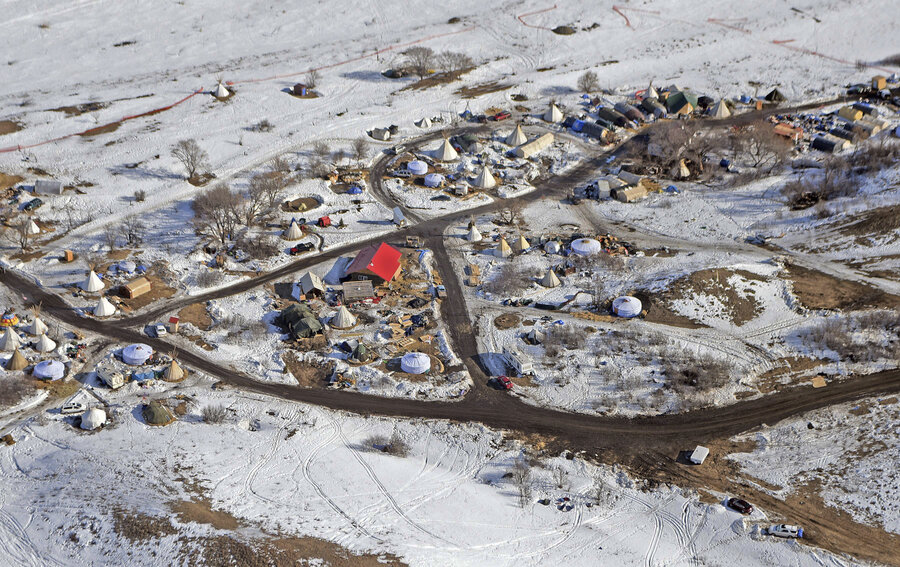With Dakota Access camp cleared, where are protestors headed?
Loading...
The main camp for Dakota Access Pipeline protesters was cleared this week by authorities, who arrested about 50 holdouts on Thursday at the Oceti Sakowin site near Cannon Ball, N.D.
The eviction, ordered by the Army Corps of Engineers on Wednesday in advance of spring flooding, follows an earlier request by the Standing Rock Sioux Tribal Council that demonstrators leave camps on the reservation. And it represents a turning point for the movement, whose members pledge to block similar projects in several states, even as their opposition stiffens.
"The closing of the camp is not the end of a movement or fight, it is a new beginning,” said Tom Goldtooth, executive director of the Indigenous Environmental Network. "They cannot extinguish the fire that Standing Rock started."
Protesters said they might shift their attention to the Sabal Trail pipeline, which would ship natural gas from Alabama to Florida, or the Trans-Pecos line in West Texas and the Diamond Pipeline, which would run from Oklahoma to Tennessee.
And opposition to the planned expansion of the Bayou Bridge pipeline in Louisiana – a project authored by Energy Transfer Partners, also responsible for the Dakota Access – has already begun.
In Louisiana, a state where oil and gas companies provide an outsize proportion of government revenues – and exercise commensurate clout – opposition to the Bayou Bridge project is bringing together an unexpected coalition. Opponents include environmentalist groups, the crawfish industry, and others emboldened by the victories of Dakota Access and Keystone XL pipeline protesters, even if those victories prove temporary, reported JR Ball for NOLA.com.
"That there is protest at all is a bit surprising,” wrote Mr. Ball earlier this month. "Typically a pipeline project, even one as large as this, would garner little public attention in Louisiana and sail through the regulatory and permitting processes."
What next for the #NoDAPL fight?
For the Standing Rock Sioux and other opponents of the Dakota Access Pipeline, the protesters' departure means the fight has moved to the courtroom.
Last month, the Trump administration granted Energy Transfer Partners permission to build the last piece of the 1,200-mile pipeline, a stretch that would run beneath the Missouri River reservoir. But the Sioux and the Cheyenne River tribe, along with the support of some 33 other Native groups, have asked a district judge to overturn that permission, according to ABC. And if they lose that battle and the pipeline goes into operation, Sioux tribal chairman Dave Archambault told the Associated Press earlier this month, the tribe will try to get it shut down.
Some of the protesters from the Oceti Sakowin camp are heading to other camps on the reservation, despite the Sioux’s request that all of the camps be shut down. Apart from concerns over flooding made likely by spring snowmelt, the tribal council cited economic hardship stemming from the closure of a local highway, according to InsideClimate News.
"We are working with the tribe and the Bureau of Indian Affairs” to resolve the situation, said Joye Braun, a protest leader, reported ABC.
Material from Reuters was used in this report.








